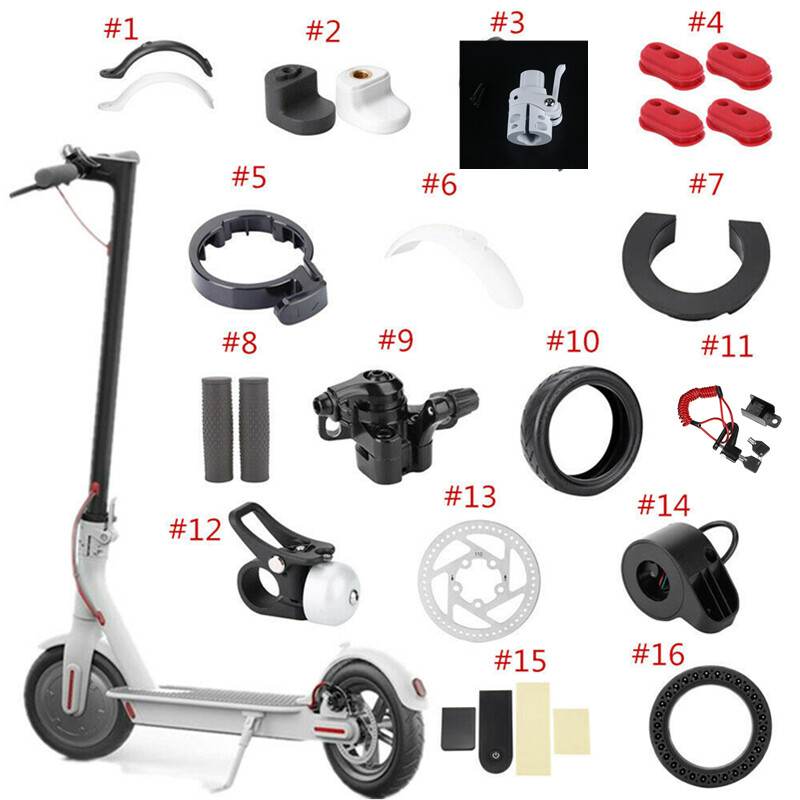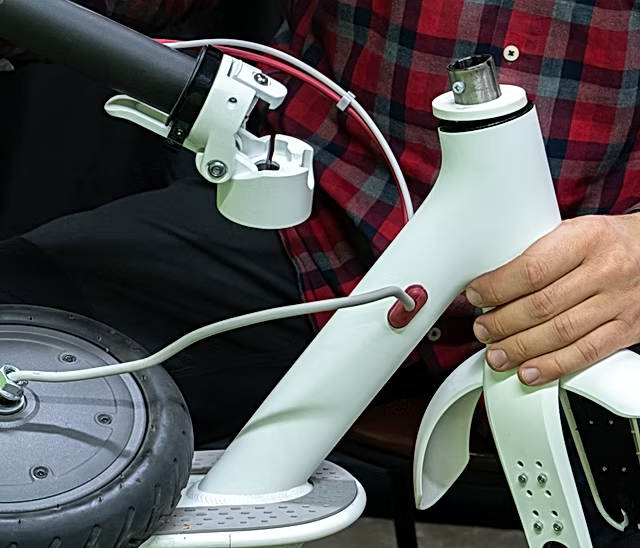In this comprehensive guide, we’ll dive into everything you need to know about electric scooter parts and accessories. Whether you’re a scooter enthusiast looking to upgrade your ride or a business looking to understand the key components that make up an electric scooter, this article is designed to cover all the essentials. From batteries to wheels, and brakes to accessories, we’ll guide you step-by-step through the different types of parts available and why they matter.
1. What are Electric Scooter Parts and Accessories?
Electric scooter parts and accessories play an essential role in maintaining your scooter’s performance and enhancing its functionality. But here’s the kicker—without quality parts and accessories, your electric scooter’s performance can suffer drastically. So, let’s break down what these parts actually are and why they matter.
The main parts of an electric scooter include the motor, battery, wheels, brakes, and frame. These components work together to ensure smooth and efficient riding. The motor is responsible for propelling the scooter, while the battery supplies the power needed for the motor to operate. Wheels and tires impact ride quality, while the brake system ensures safety by allowing the rider to stop quickly and effectively. The frame holds everything together, ensuring that the scooter is both sturdy and stable.
But what about the accessories? These are the extras you can add to your scooter to improve its performance, comfort, and safety. From handlebar grips and footrests to suspension systems and lighting, accessories can enhance the rider experience and even increase the scooter’s lifespan. Accessories are essential not just for convenience but also for customization—after all, your scooter should reflect your personal preferences!
| Component | Function | Importance |
|---|---|---|
| Motor | Propels the scooter | Powers the scooter and determines speed |
| Battery | Supplies power to the motor | Essential for operation and range |
| Wheels/Tires | Affects ride quality | Directly impacts comfort and handling |
| Brakes | Stops the scooter | Crucial for safety and control |
| Frame | Holds all components together | Provides stability and support |

2. Essential Electric Scooter Parts You Need to Know
There are several key components that every electric scooter must have to function properly. Ready for the good part? Let’s look at each essential part in detail to understand why they matter so much.
The battery is the lifeblood of any electric scooter. It stores the energy that powers the motor. Battery performance is critical for range and charging time. Lithium-ion batteries are commonly used in scooters due to their longevity, light weight, and efficient energy storage. But here’s the kicker—if you opt for a poor-quality battery, you may end up with a scooter that can’t go the distance or takes too long to charge.
Next, there’s the motor. The motor is responsible for generating the power that moves the scooter forward. Motors come in different power ratings, typically between 250W to 1000W. What’s the real story? The motor’s power determines how fast your scooter can go and whether it can handle uphill climbs or rough terrain.
Wheels and tires are another vital component. The tire type you choose will have a significant impact on your ride quality. For instance, solid tires are puncture-proof and require less maintenance, while pneumatic tires provide a smoother ride but need more care. What’s the real story? The right tire choice depends on your scooter’s use, your terrain, and how much maintenance you’re willing to put into it.
Brakes are perhaps the most important safety component of your scooter. The most common types of brakes are disc brakes, drum brakes, and electronic brakes. Disc brakes are known for their superior stopping power, especially in wet conditions. So here’s the twist— having reliable brakes is non-negotiable when it comes to riding safely.
| Part | Function | Important Notes |
|---|---|---|
| Battery | Powers the motor | Choose lithium-ion for efficiency and longevity |
| Motor | Provides movement | Higher wattage motors offer more power and speed |
| Wheels/Tires | Impact comfort and handling | Solid tires require less maintenance, pneumatic provide a smoother ride |
| Brakes | Stops the scooter | Disc brakes offer the best stopping power |
3. The Role of the Battery in Your Electric Scooter
Batteries are the core power source for your electric scooter. But here’s the kicker—batteries can be the most expensive component to replace, so choosing the right one is crucial. Ready for the good part? Understanding how batteries work can help you make an informed decision on which one to buy and how to maintain it.
The most common type of battery used in electric scooters today is the lithium-ion (Li-ion) battery. These batteries are lightweight, have a high energy density, and offer a longer lifespan compared to traditional lead-acid batteries. So, what’s the real story? Li-ion batteries can typically last for 500 to 1,000 charge cycles, depending on usage. In contrast, lead-acid batteries may only last for 300 to 500 cycles before they need replacing.
One thing to keep in mind when choosing a battery is its voltage. Higher voltage batteries, such as 48V, can power more powerful motors and provide greater speeds. However, they also tend to weigh more. This is where it gets interesting— if you’re someone who needs long-range capability, a higher-voltage battery might be a good investment.
Another consideration is charging time and the overall lifespan of the battery. Ready for the good part? While Li-ion batteries charge faster than lead-acid batteries, they also require proper care to extend their lifespan. Overcharging or letting the battery completely deplete can shorten its life.
| Battery Type | Lifespan (Charge Cycles) | Charging Time | Pros | Cons |
|---|---|---|---|---|
| Lithium-Ion | 500–1,000 | 3-6 hours | Lightweight, long-lasting, fast charge | Expensive, sensitive to extreme temperatures |
| Lead-Acid | 300–500 | 6-12 hours | Cheaper, widely available | Heavier, shorter lifespan |
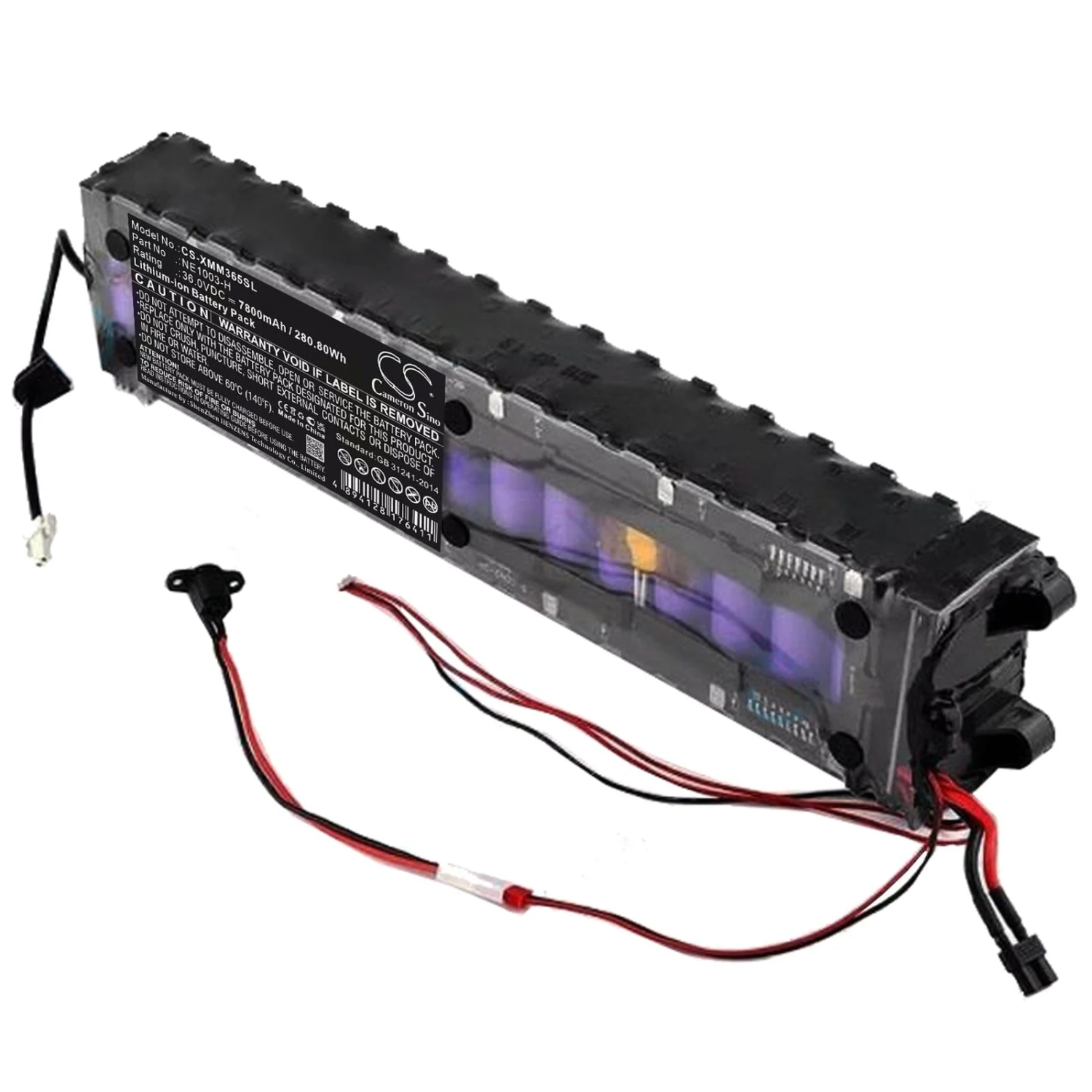
4. How to Choose the Right Motor for Your Electric Scooter
Choosing the right motor for your electric scooter is essential for ensuring you get the most out of your ride. What’s the real story? The motor’s power determines your scooter’s speed, ability to handle inclines, and overall performance. But here’s the kicker—there’s no one-size-fits-all motor for every rider. Your ideal motor depends on your specific needs and riding habits.
The first thing you should consider is motor power. Motors are typically measured in watts (W). A 250W motor is great for city commuting on flat surfaces, while a 500W motor can handle slightly steeper inclines and rougher terrain. Ready for the good part? If you’re looking for maximum performance and speed, you’ll want a motor that falls between 750W and 1000W, which is common in off-road electric scooters.
Motor placement is another factor to consider. This is where it gets interesting— motors are either hub motors (located in the wheel) or geared motors (located within the scooter’s frame). Hub motors are quieter and more efficient but are less powerful. Geared motors, on the other hand, offer greater torque and better hill-climbing ability. So here’s the twist— your choice of motor will depend on your primary riding conditions.
When choosing a motor, also think about the terrain you will be riding on. For instance, a more powerful motor is ideal for off-road riders, while city commuters might prefer a more efficient, lower-power motor.
| Motor Type | Power Range | Ideal Use | Pros | Cons |
|---|---|---|---|---|
| Hub Motor | 250W–500W | City commuting, light use | Quieter, more efficient, less maintenance | Less torque, less power |
| Geared Motor | 500W–1000W | Off-road, heavy use | Better torque, can handle hills | Noisier, more maintenance |
5. Choosing the Right Tires for Your Scooter
Choosing the right tires for your scooter impacts everything from comfort to performance. What’s the real story? Tires are often overlooked but are crucial for ensuring a smooth, safe ride. But here’s the kicker—choosing between solid and pneumatic tires can be a tough decision, especially when both have their own unique benefits.
Solid tires are puncture-proof and require little maintenance, making them perfect for daily commuters. They are typically made from durable rubber or foam and are designed to last for a long time. Ready for the good part? However, they don’t offer the same level of shock absorption as pneumatic tires, which means you may feel bumps more acutely on rough terrain.
Pneumatic tires, on the other hand, are air-filled and provide better cushioning, making them ideal for rough roads or uneven surfaces. This is where it gets interesting— while pneumatic tires provide a smoother ride, they are more prone to punctures and require more frequent maintenance. So here’s the twist— the choice between solid and pneumatic tires depends largely on your riding style and the terrain you frequent.
The size of the tire is also an important consideration. Larger tires provide better stability and are ideal for off-road scooters, while smaller tires are more agile and suitable for urban commuting.
| Tire Type | Benefits | Drawbacks | Best For |
|---|---|---|---|
| Solid Tires | Puncture-proof, low maintenance | Less shock absorption, rougher ride | City commuting, flat terrain |
| Pneumatic Tires | Smooth ride, better shock absorption | Prone to punctures, requires maintenance | Off-road, rough terrain |
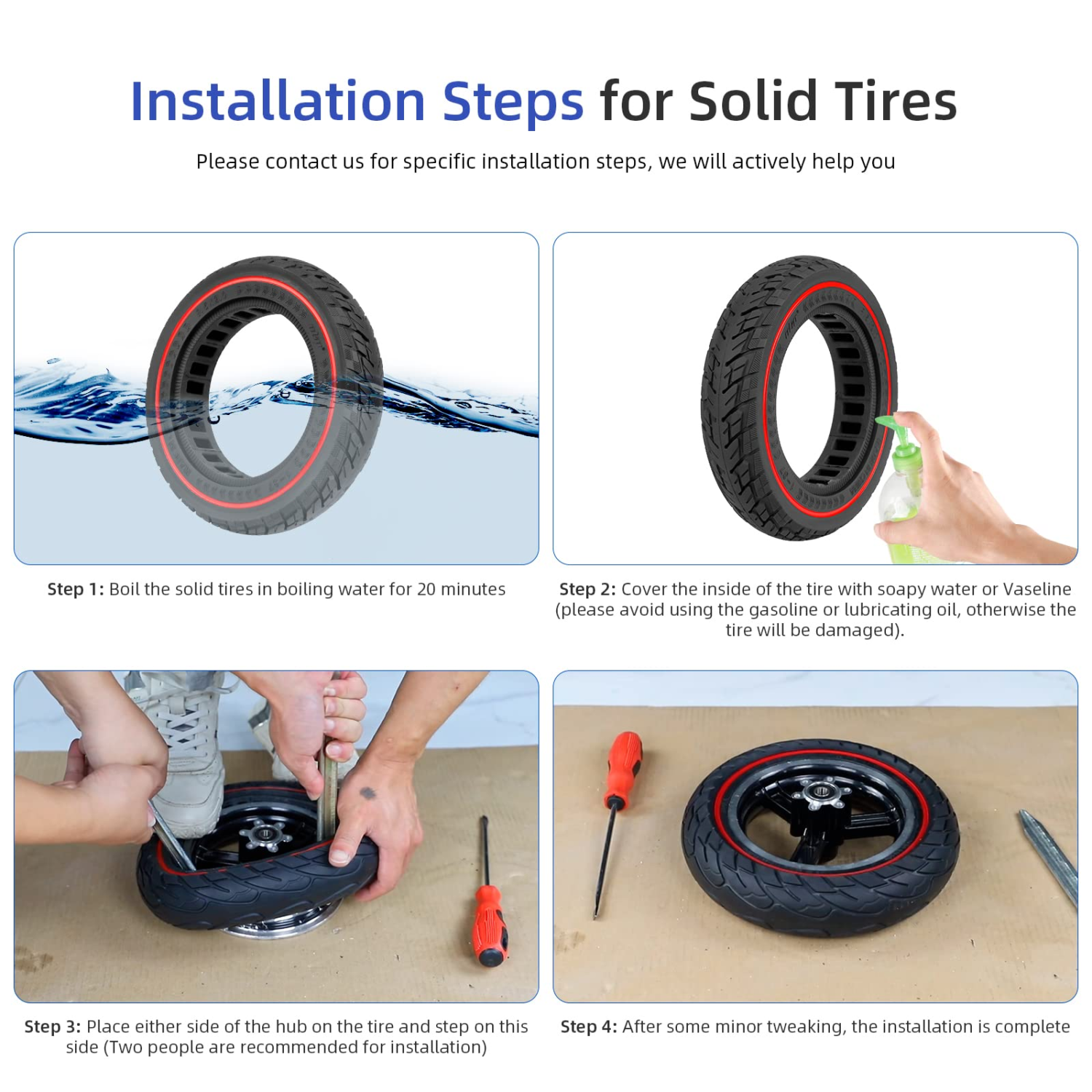
6. Brake Systems and How to Maintain Them
Brakes are one of the most critical safety components of your electric scooter. Ready for the good part? Without a reliable braking system, your scooter can become a safety hazard. So, let’s take a closer look at the different types of brakes and how to keep them in top condition.
Disc brakes are widely considered the best option for electric scooters. They provide superior stopping power, especially in wet or slippery conditions. What’s the real story? Disc brakes are also more reliable than drum brakes, especially on high-speed scooters. However, they require more maintenance and may need to be replaced after extensive use.
Drum brakes are less common but still present on some scooters. They are easier to maintain and can perform well in dry conditions. But here’s the kicker— drum brakes tend to lose their stopping power when exposed to moisture, so they may not be the best choice for rainy or wet environments.
Finally, there are electronic brakes, which use the motor’s resistance to slow down the scooter. These are low-maintenance but generally not as powerful as mechanical brakes. This is where it gets interesting— combining electronic brakes with disc or drum brakes can provide the best of both worlds, offering effective stopping power with minimal wear.
| Brake Type | Pros | Cons | Best For |
|---|---|---|---|
| Disc Brakes | Strong stopping power, reliable | Requires maintenance, noisy | High-speed, off-road |
| Drum Brakes | Low maintenance, affordable | Less powerful, ineffective in wet conditions | Budget models, dry climates |
| Electronic Brakes | Low maintenance, smooth braking | Less powerful, not suitable for high speeds | Commuters, low-speed scooters |
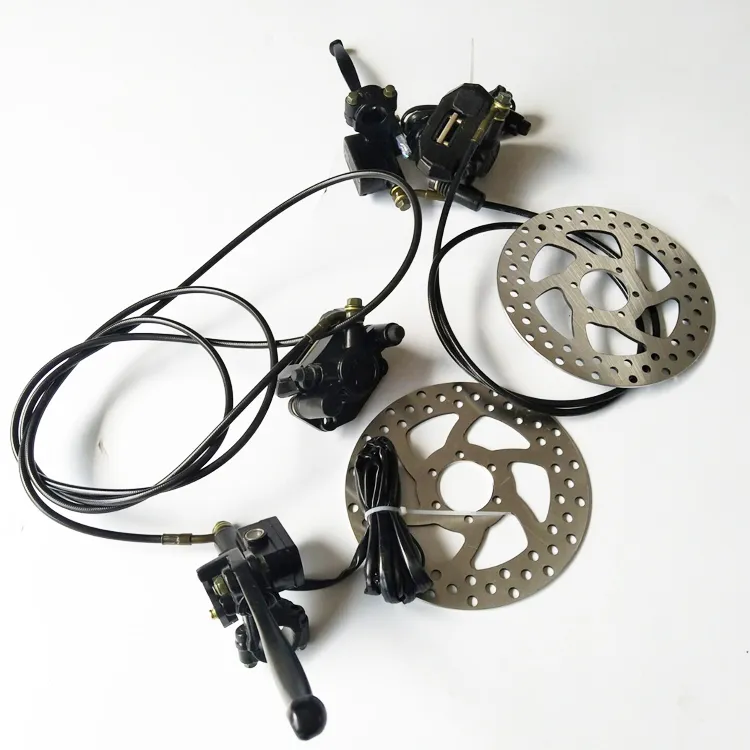
7. Handlebar and Footrest Accessories for Comfort and Safety
When it comes to accessories, handlebar grips and footrests are two of the most overlooked yet important additions to your electric scooter. What’s the real story? These simple additions can vastly improve both the comfort and safety of your ride.
Handlebar grips come in various materials such as rubber, foam, and silicone. Ready for the good part? The right grip can make a huge difference in your riding experience. For example, rubber grips provide better traction and are more durable, while foam grips are softer but wear down faster. Here’s the kicker— choose a grip that suits your riding style. If you’re in it for the long haul, a thicker grip might be more comfortable.
Footrests are another accessory that can significantly improve your scooter’s comfort, especially on long rides. What’s the real story? Footrests allow you to shift your weight, preventing leg fatigue during extended rides. Some scooters come with built-in footrests, while others require aftermarket additions. Ready for the good part? A good footrest can also contribute to the stability of your scooter, making it easier to control.
| Accessory | Benefits | Considerations | Best For |
|---|---|---|---|
| Handlebar Grips | Comfort, better control, reduced hand fatigue | Choose material based on riding conditions | Long rides, all-weather use |
| Footrests | Added comfort, better weight distribution | Ensure compatibility with scooter model | Long-distance commuters |

8. Lights and Reflectors: Enhancing Visibility and Safety
Lighting and reflectors are a must-have for electric scooter riders, especially for those who ride at night. What’s the real story? Scooter lights are crucial for ensuring visibility and staying safe on the road. But here’s the kicker—having the right lighting setup isn’t just about having lights, it’s about having the right lights.
Headlights and taillights are essential for riding at night or in low-visibility conditions. Ready for the good part? A strong front light ensures you can see ahead while a rear light alerts others to your presence. Reflectors are also a great addition to your scooter for added visibility. What’s the real story? They’re easy to install and provide additional safety, especially when riding in urban environments.
For better visibility, consider using lights with rechargeable batteries. Here’s the twist— these lights are more energy-efficient and reduce the need for frequent battery replacements. They can also be adjusted for brightness based on your needs.
| Lighting Option | Benefits | Considerations | Best For |
|---|---|---|---|
| Headlights | Better visibility, increases safety | Ensure brightness and battery life | Night riding, urban areas |
| Taillights | Alerts others, improves safety | Must be visible from a distance | Commuting, urban areas |
| Reflectors | Low-cost, easy to install, increases visibility | Limited brightness compared to lights | City riding, low-light conditions |

9. The Role of Suspension Systems in Electric Scooters
For many riders, suspension systems are a game-changer, especially if you frequently ride on rough or uneven terrain. What’s the real story? Suspension systems can dramatically improve your ride quality, making bumpy roads more bearable. But here’s the kicker—there are different types of suspension systems, and each one serves a different purpose.
Front suspension absorbs shocks from the front wheel, while rear suspension helps cushion the ride from the back wheel. Ready for the good part? Some scooters come with full suspension, which offers the best of both worlds by providing shock absorption on both ends. Full suspension scooters are ideal for off-road riders and those who tackle a variety of terrains.
If you mostly ride on smooth, paved roads, a scooter with basic front suspension might be enough. So here’s the twist— if you’re looking for a more comfortable and controlled ride, full suspension will be worth the extra investment.
| Suspension Type | Benefits | Ideal Use | Best For |
|---|---|---|---|
| Front Suspension | Absorbs front-wheel shocks, improves comfort | Urban riding, smooth surfaces | City commuters |
| Rear Suspension | Absorbs rear-wheel shocks, reduces fatigue | Off-road riding, rough terrain | Off-road riders |
| Full Suspension | Absorbs shocks from both wheels, best comfort | Long-distance and off-road riding | Riders who need maximum comfort |
10. Upgrade Options: Enhancing Performance with Aftermarket Parts
If you’re looking to take your electric scooter to the next level, here’s the kicker— aftermarket parts are a great way to enhance performance and customize your ride. Whether you want a faster scooter, more durability, or a smoother ride, upgrading certain parts can make a big difference.
A performance motor upgrade can significantly boost your scooter’s speed and climbing ability. What’s the real story? High-performance motors typically range from 750W to 1000W, offering increased torque and acceleration. This can make a noticeable difference, especially when riding uphill or on rough terrain.
Suspension upgrades are another popular modification for riders looking for added comfort and performance. Ready for the good part? Adding a full suspension system or upgrading your existing one can improve your riding experience, especially for those who use their scooters on bumpy or uneven roads.
For those who prioritize range, upgrading your battery is another way to improve performance. What’s the real story? A larger-capacity battery will give you more distance per charge, so you can ride longer without needing to recharge.
| Upgrade Option | Benefits | Ideal Use | Considerations |
|---|---|---|---|
| Motor Upgrade | Increased speed, better torque | Off-road, uphill riders | More power, faster speeds |
| Suspension Upgrade | Improved comfort, reduced fatigue | Rough terrain, long-distance riding | Adds cost, increased weight |
| Battery Upgrade | Increased range, longer rides | Long-distance commuting, off-road riding | Adds cost, increases weight |
11. Safety Gear for Electric Scooter Riders
Riding an electric scooter is thrilling, but safety should always come first. What’s the real story? Having the right safety gear can make all the difference in the event of an accident. Ready for the good part? Let’s look at the essential safety gear every rider should have.
Helmets are a must-have for any electric scooter rider. So here’s the kicker— they protect your head in case of a fall or collision. Make sure to choose a helmet that meets safety standards for maximum protection. Protective pads, such as knee and elbow pads, are also essential for preventing injury during falls. What’s the real story? They offer extra protection, especially for beginners who might be more prone to losing balance.
Gloves are another important safety accessory. Ready for the good part? They improve grip and reduce hand fatigue, making long rides more comfortable. Here’s the twist— they also offer extra protection in case you fall, preventing cuts or abrasions to your hands.
| Safety Gear | Benefits | Considerations | Best For |
|---|---|---|---|
| Helmet | Protects your head, essential for safety | Choose one that meets safety standards | Every scooter rider |
| Knee/Elbow Pads | Protects joints from injury | Useful for beginners or long-distance riders | Riders seeking |
extra protection | | Gloves | Improves grip, prevents hand injuries | Choose material based on weather conditions | Long-distance commuters |
12. How to Maintain Your Electric Scooter for Longevity
Maintaining your electric scooter is essential to ensure its longevity and optimal performance. So, what’s the real story? Regular maintenance will save you money on repairs and replacement parts in the long run. Ready for the good part? Let’s go over the most important maintenance tasks you should regularly perform on your scooter.
One of the first things you should do is check your tires. But here’s the kicker— keeping your tires properly inflated will ensure better ride quality and extend their lifespan. If you have pneumatic tires, check them regularly for punctures and replace them if necessary. For solid tires, make sure they are aligned correctly and free of cracks or damage.
Another key maintenance task is checking the brake system. What’s the real story? Brakes can wear down over time, especially with frequent use. Make sure to inspect the brake pads and cables for wear and tear. Adjust or replace them as needed to maintain optimal stopping power.
The battery should also be checked regularly. Ready for the good part? Clean the battery terminals and ensure that the battery is securely connected to the scooter. If you notice any issues with charging or battery performance, it might be time for a replacement.
| Maintenance Task | Recommended Frequency | Benefits | Considerations |
|---|---|---|---|
| Tire Maintenance | Every 1–2 weeks | Better ride quality, extended tire life | Check for punctures and proper inflation |
| Brake System Check | Every 2–3 months | Ensures safe braking, prevents accidents | Replace worn brake pads or cables |
| Battery Care | Monthly | Prevents degradation, extends battery life | Clean terminals and check charging status |
13. Where to Buy Electric Scooter Parts and Accessories
When it comes to buying electric scooter parts and accessories, what’s the real story? You have plenty of options, both online and in-store. Ready for the good part? Let’s break down the best places to find high-quality scooter parts and accessories.
Online stores are one of the most convenient options for purchasing parts and accessories. But here’s the kicker— shopping online allows you to browse a wide selection of brands and compare prices easily. You can find everything from motors to tires and accessories on platforms like Amazon, eBay, and specialized scooter retailers.
If you prefer shopping locally, many bike shops and scooter dealerships offer parts and accessories. So here’s the twist— shopping in-store gives you the advantage of speaking directly to experts who can recommend the right parts for your scooter model.
When buying parts, be sure to look for trusted suppliers. What’s the real story? Counterfeit parts may be cheap, but they can compromise your scooter’s safety and performance. Stick to reputable suppliers who offer high-quality, tested parts to ensure the longevity and safety of your scooter.
| Supplier Type | Pros | Cons | Best For |
|---|---|---|---|
| Online Retailers | Wide selection, convenient, easy to compare prices | May need to wait for shipping | Those who prefer convenience |
| Local Dealers | Expert advice, immediate availability | Limited selection, higher prices | Riders seeking immediate purchases |
14. When Should You Replace Your Solid Tires?
Solid tires are known for their durability, but here’s the kicker— they don’t last forever. Ready for the good part? Let’s look at when it’s time to replace your solid tires.
The first sign that it’s time to replace your tires is visible wear and tear. What’s the real story? If you notice flat spots or cracks on your tires, it’s a good indication that they need replacing. Even solid tires can become damaged over time, especially if used in harsh conditions.
Another reason to replace your solid tires is if they lose their grip. This is where it gets interesting— solid tires are meant to maintain traction, but they can lose their effectiveness as the tread wears down. If your scooter starts slipping or feels less stable, it may be time to upgrade your tires.
Lastly, check for any deformations or bulging. What’s the real story? If the tire has become misshapen or is not holding air correctly, it’s time for a new one.
| Indicator | Description | Action Required |
|---|---|---|
| Visible Damage | Cracks, tears, or flat spots | Replace tires immediately |
| Loss of Grip | Slipping or reduced traction | Replace with new tires |
| Deformation | Bulging or misshaped tires | Replace tires to ensure proper function |
15. Conclusion
In conclusion, understanding electric scooter parts and accessories is essential for any rider, whether you’re looking to enhance your scooter’s performance or simply maintain it. What’s the real story? Choosing the right parts and accessories ensures that your scooter runs smoothly, stays safe, and lasts longer. By investing in quality components, regular maintenance, and suitable upgrades, you’ll get the most out of your scooter.
So here’s the kicker— take care of your scooter, invest in the right parts, and you’ll enjoy many more miles of riding enjoyment. Whether you’re commuting or cruising, the right accessories and parts can make all the difference.
FAQ Section
Q1: What are the most important parts of an electric scooter?
The most important parts include the battery, motor, wheels/tires, brakes, and frame.
Q2: How does the motor power affect my electric scooter’s performance?
The motor power determines how fast your scooter can go and whether it can handle uphill climbs or rough terrain.
Q3: How do I maintain my electric scooter tires?
Regularly check tire pressure, inspect for wear, and replace tires when they become damaged or excessively worn.
Q4: What type of brakes are best for an electric scooter?
Disc brakes are generally considered more effective and reliable for electric scooters due to their superior stopping power.
Q5: How often should I replace my scooter battery?
Scooter batteries should be replaced every 1-2 years, depending on usage and battery type. Regular maintenance and charging can help extend battery life.

